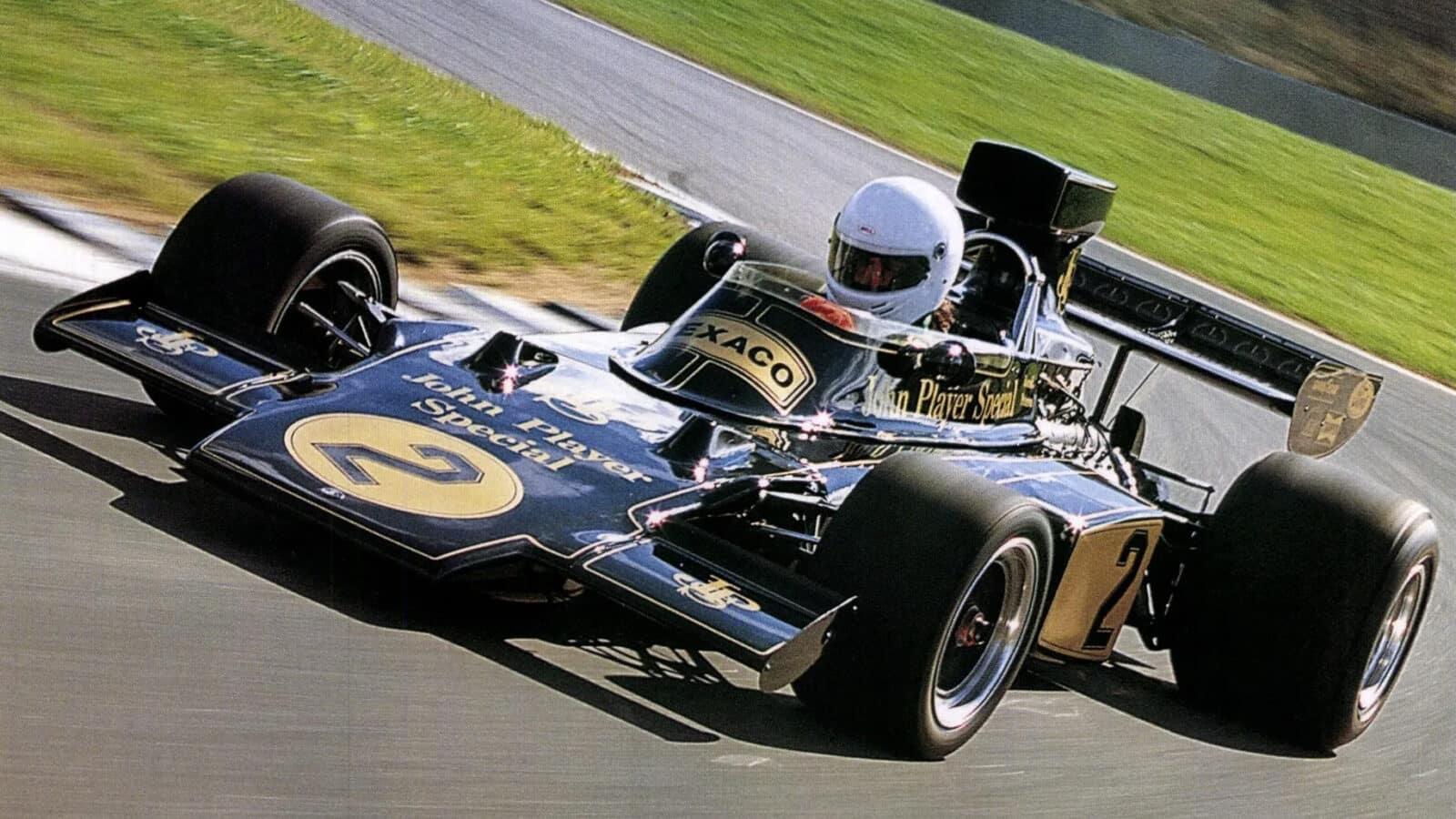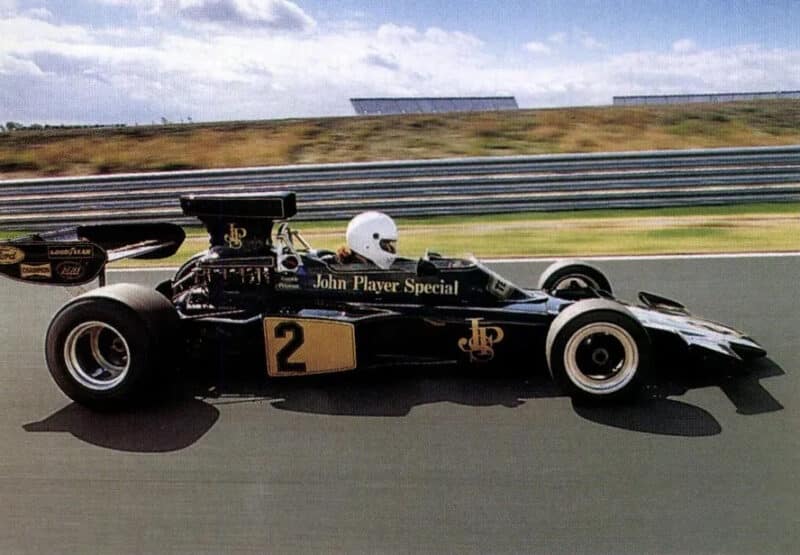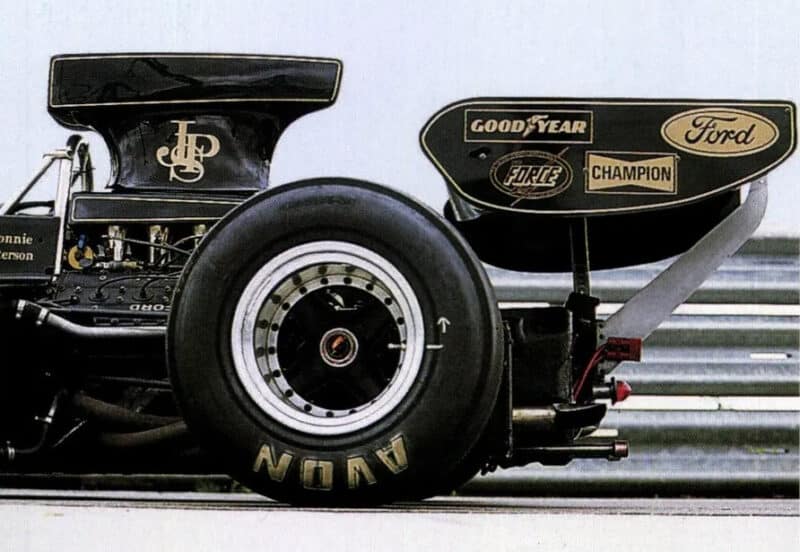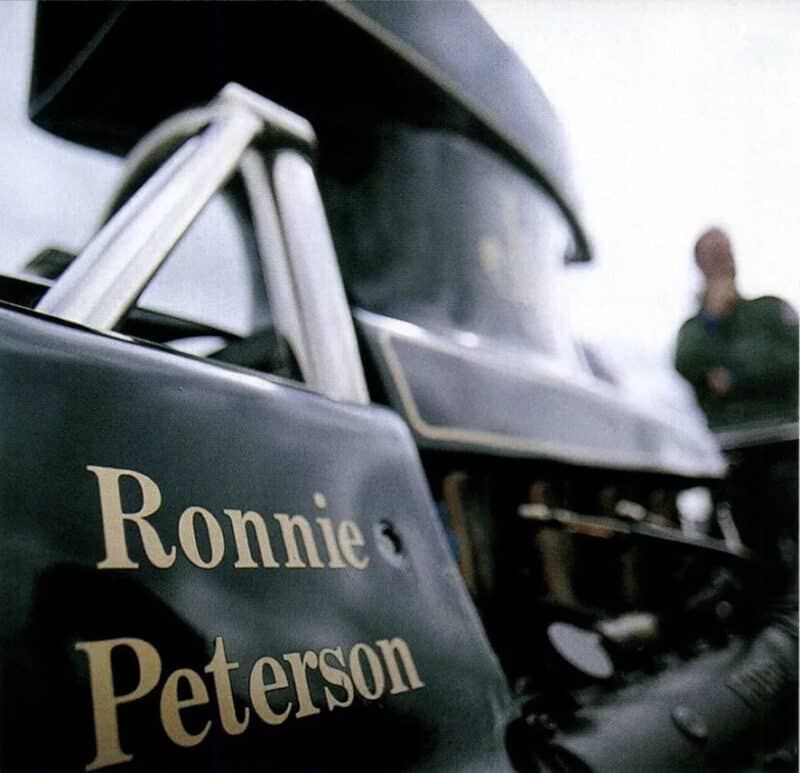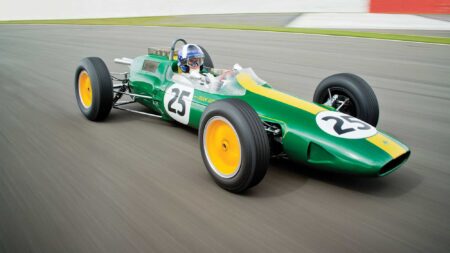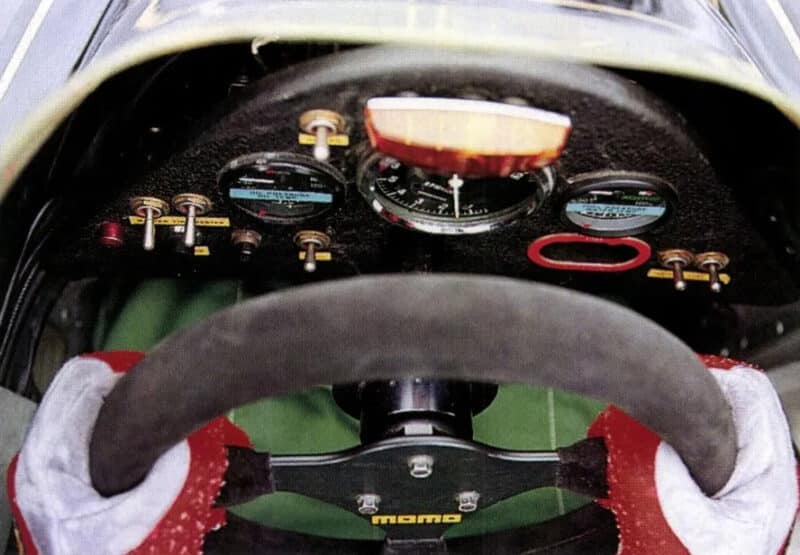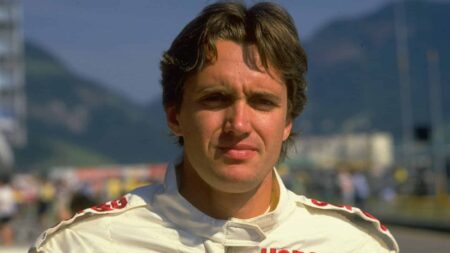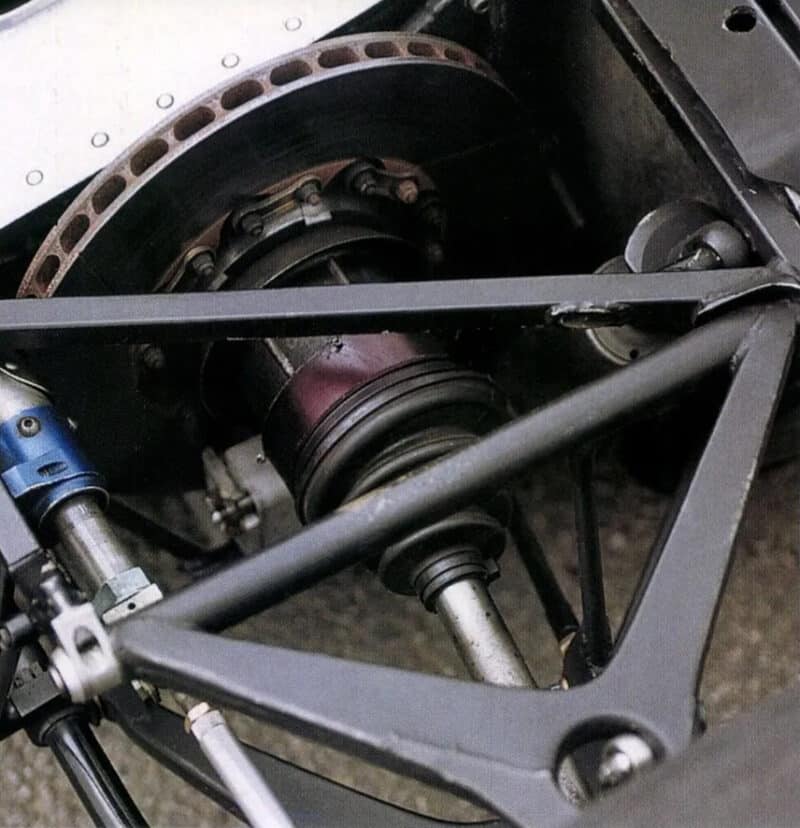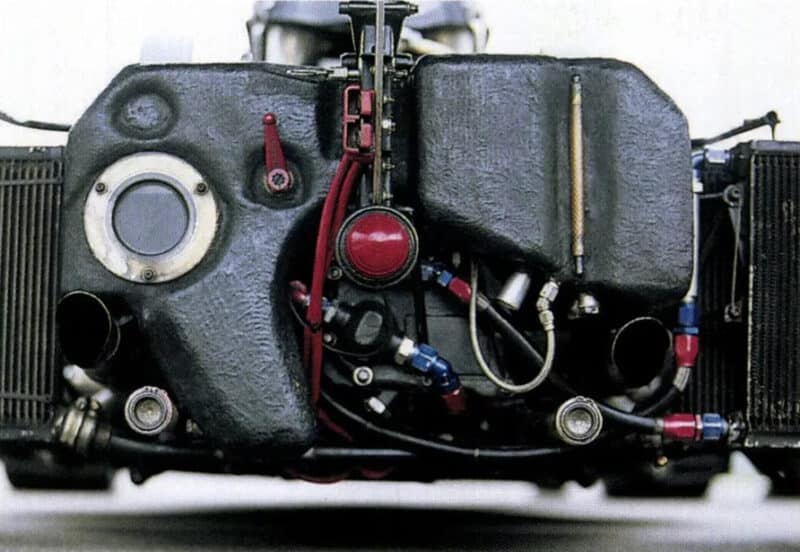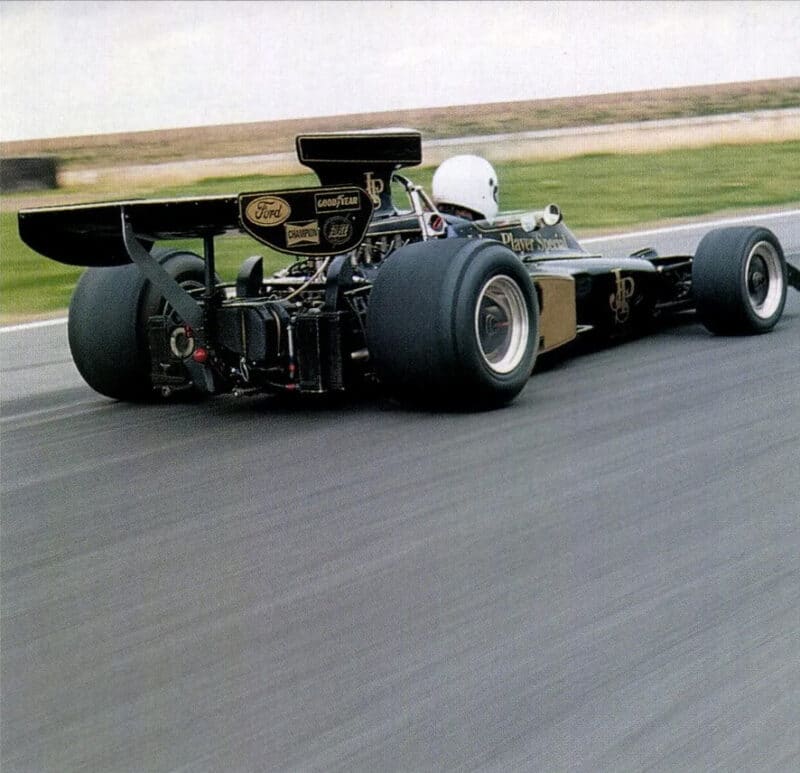Chassis 72/6. Built for 1971. Once of Gold Leaf, once of Reine Wisell; now of John Player Special, of ‘Mad Ronald’. Peterson had begun his first season with Lotus, 1973, in the brand-new chassis 8, retiring it when fourth in Argentina, setting pole but stopping early in Brazil, finishing way down in South Africa after fixing a throttle link. He drove 8 at the International Trophy, too, finishing second to Stewart — having been beaten to pole by team-mate (no Woodcote mug then!) Emerson Fittipaldi. In Spain, Ronnie and 8 were on pole by a towering seven-tenths and led for 56 laps — until the gearbox broke. In Belgium, they were on pole, only to fade and then crash.
In between times, Ronnie had driven 6 at the Race of Champions in March, setting joint fastest lap and leading — until the transmission let go. Car and driver were reunited in Monaco in June, sat on the front row there and led for six laps — until the fuel pressure faltered and five places were lost before the subsidiary electric pump kicked in. Third was the eventual result that day.
And so to Sweden. Featureless Anderstorp was unlovely, but the crowd loved their homecoming hero. But then everyone loved Ronnie. He and 6 pipped François Cevert’s Tyrrell 006 to pole, and led for 79 laps. Trouble was, the race was 80 laps. A deflating left-rear meant he was powerless to stop the McLaren M23 of Denny Hulme slicing by right at the death.
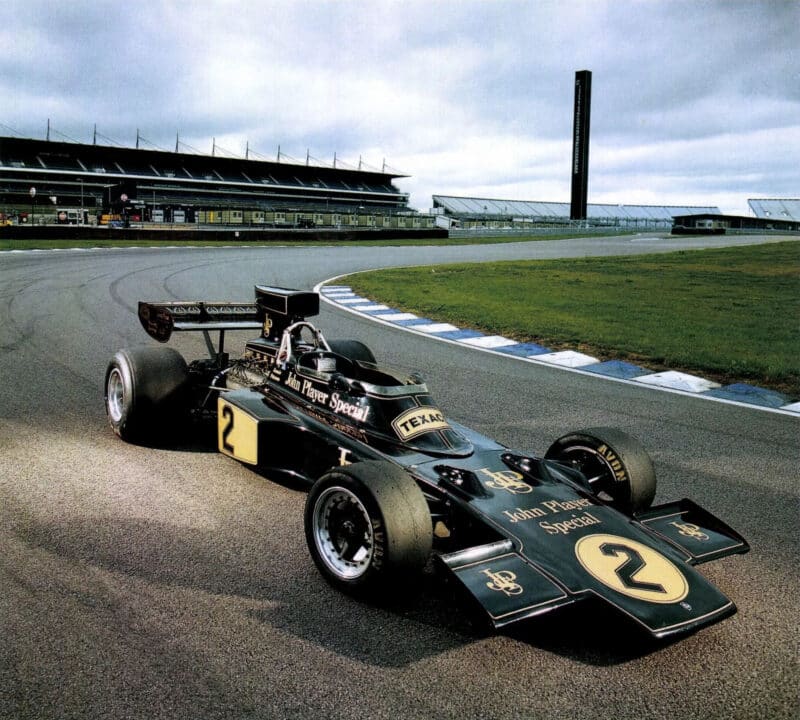
Choose black and gold for your F1 colour scheme today and your image advisors would explain how it wouldn’t work on TV
Photography by Charlie Magee
So the switch to 6 was no instant panacea, and Peterson’s obvious talent had still to be rubber-stamped by a GP victory. At the halfway point of that season, after seven rounds of 15, he had a mere 10 points to his name; Fittipaldi had 41, two more than Stewart The reigning world champion, the youngest ever, was still very much number one at Lotus. But Ronnie had that blinding speed, that annoying habit of slapping on his team-mate’s settings and going that bit quicker. He was on the cusp of something.
As am I — if I can keep my foot steady on the throttle. The nerves are there, it’s true. As is that road-car quirk of absent-mindedly blipping the throttle. A cold DFV has to be caught and held — at about 4000rpm, apparently. The throttle is heavy, though, my brain is as cold as the motor, and two or three times I let the revs drop. Stall. Bump. And away.
